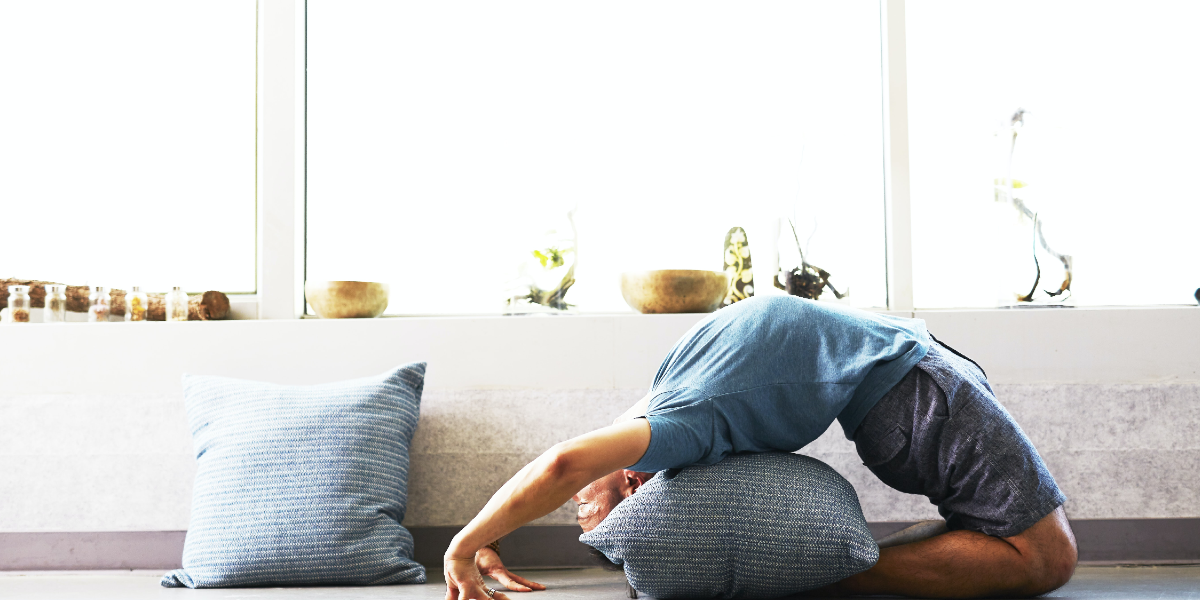Running long distances and lifting heavy weights is cool and all, but do you complement that with flexibility exercises?
No matter your activity, stretching provides a number of benefits:
- You’ll see an improvement in your activities of daily living, such as bending, squatting, lunging, stepping over things
- Your posture will improve so you can sit up and stand up better
- Your risk for injury will decrease
- Your muscles will release their tension to become more relaxed.
Now that you know why you need to focus on your flexibility, let’s look at how to restore it.
1. Eat The Right Foods
First, make sure you’re eating the right foods to help with your flexibility.
Prioritize eating natural foods that are rich in nutrients, vitamins, and minerals. Processed food can cause inflammation.
Some foods to include in your diet could be:
- Berries – Cherries, blackberries, blueberries are all examples of berries that are rich sources of antioxidants, which slow down the aging process.
- Fruits and vegetables – Red peppers, citrus fruits, and tomatoes are some of the many fruits and veggies that contain Vitamin C. This vitamin helps your body make collagen, providing a cushion for your cartilage, ligaments, and tendons.
- Whole grains – Whole grains are better for lowering inflammation compared to refined grains like white flour. Examples of whole grains include oatmeal, quinoa, and brown rice. Some foods, like bread, contain whole grains—be sure the label specifies so in the ingredients with these terms.
For more on food, visit MyPlate.gov.
Bonus tip: It doesn’t really matter whether your veggies are fresh or frozen. Their nutrient makeup is the same.
2. Breathe
When you’re working on flexibility, remember to breathe.
Stretching and strengthening can literally take our breath away.
Sometimes, we hold our breath if we are at our limit. This tightens our muscles, preventing us from lengthening them to get more limber. Plus, inhaling puffs up the abdomen, making it more challenging for us to bend the lumbar spine forward.
Exhaling, on the other hand, relaxes our muscles. Our lungs deflate, lifting our diaphragm, relaxing our back, and tilting our pelvis forward. All of these functions allow us to get into a deeper stretch.
I’ve talked before about the importance of breathing, and that fact remains the same here.
One additional point about breathing and flexibility: When negative things happen in our lives, it’s extremely easy to (over)react to those things in the moment. Flexibility works for the mind as well as the body. Next time you feel overwhelmed, practice this breathing technique: Breathe in for 3, hold for 3, breathe out for 3, and hold for 3. Do this a few times before responding. I’ve used this strategy after challenging client meetings and it’s worked for me.
3. Take It Easy
Improving flexibility shouldn’t hurt. Your muscles may be sore a day or two afterward, but they shouldn’t be in pain.
First, stretch when your body is warm after a hot bath or a great workout.
Second, don’t bounce or jerk your stretches. Instead, give your muscles time to ease into positions by holding a stretch. When you’re at your limit, take a few deep breaths (see the method above) to get back on track. Then, take a big breath, and exhale as you try to go further.
You’ll know when you’ve gone as far as you can go. Over time, you’ll notice improvement—especially if you’re taking regular progress pictures!
Whether you’re using DDP Yoga, RomWod, or another stretching practice, use these tips as you improve your flexibility.
